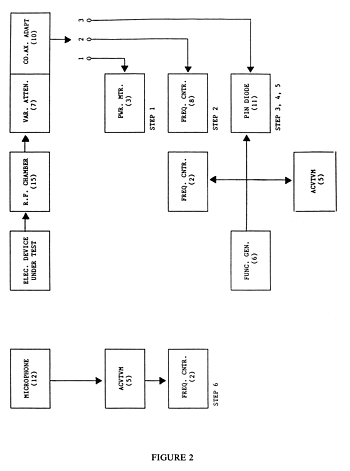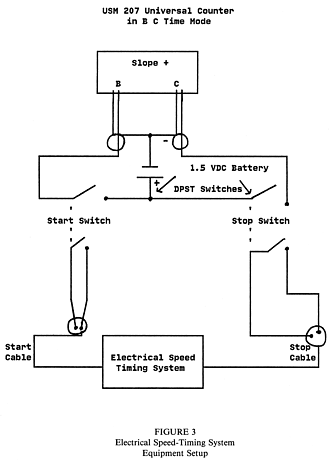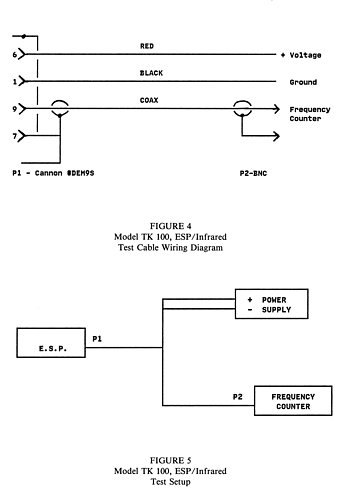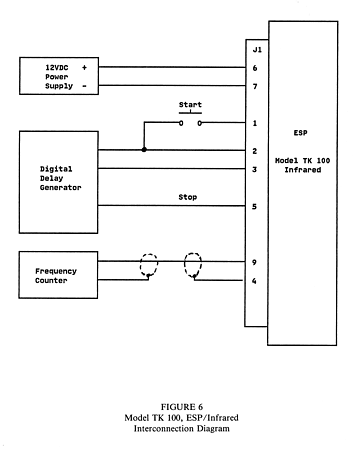§ 105.95. Manner of calibration and testing.
(a) Method. An electronic device governed by this subchapter shall be calibrated and tested as follows:
(1) Establish a measured 1/4-mile course with a tape, preferably on a relatively flat and straight roadway.
(2) Run through this 1/4 mile with both the time and distance switch on at the beginning and the turn switch off at the end. Push the distance recall button. Distance will be displayed to the nearest ten thousandths of a mile—that is, .2500. If calibration is correct, reading should be within + or - 1%, or + or - .0025 mile.
(3) If calibration is out, recalibrate according to the instructions of the manufacturer.
(4) A course other than a 1/4-mile course can be used, but not less than 1/10 mile.
(5) Run through the measured course of 1/4 mile with both the time and distance switch on at the beginning and off at the end. Push the distance recall button and record the actual distance in the unit—that is, .2504.
(6) There is now an accurate fixed distance in the machine that is within the + or - 1% tolerance. With the aid of a stopwatch, check the accuracy for the vehicular speed desired by turning the red time switch on the speed will be displayed. This can be compared with the calculated speed described in paragraph (7).
(7) Average speed is distance divided by time. With the use of a handheld calculator, divide the distance by time and multiply by 3,600 to convert seconds into hours. Use the time recall button to get the time in seconds. Also use the actual course measured distance—that is, .2500 miles—in the calculations.
Example:
Do not touch the distance switch after running the 1/4 mile course. By pushing the recall button, it should indicate a distance of .2504. Enter a nominal 15 seconds with the time switch which is checked with the time recall. It actually will be 15.10 and a speed display of 59.7 mph. Now calculate the average speed using actual time and actual distance.

This compares very favorably with the speed reading of the unit 59.7 (.17%). This procedure should be used for other speeds by varying the time input to the unit.
(8) High speed running checks may be made checking against the calibrated speedometer of the vehicle. To do this, drive the vehicle at a specific speed. Turn both time and distance switches on. Wait 5 seconds and turn both switches off. The speed will be displayed.
(b) Maintenance work-order. A maintenance work-order containing the following information shall be completed and accompany the electronic device:
(1) The serial number of the device.
(2) The work performed and the date of the work.
(3) The original complaint.
(4) The actual work performed.
(5) The amount of time taken in repair of the unit.
(6) The stock numbers of the equipment replaced.
(c) Calibration forms. Certificates of accuracy, provided by the Department, shall be filed for electronic devices calibrated and tested as follows:
(1) The original and a duplicate shall accompany the electronic device.
(2) One duplicate copy shall be retained by the maintenance and calibration station for at least 2 years.
(3) A duplicate copy, executed and signed in the same manner as the original, has the same force and effect as the original.
(d) Testing forms. Technical data forms, provided by the Department, shall be filed for electronic devices tested as follows:
(1) One original shall accompany the electronic device.
(2) Two duplicate copies shall be retained by the maintenance and calibration station for at least 2 years.
(3) A duplicate copy, executed and signed in the same manner as the original, has the same force and effect as the original.
(e) Equipment, timing strips and other devices. The calibration and testing of equipment, timing strips and other devices actually used with a particular electronic device—nonradar—shall be performed under the specifications provided by the manufacturer of an approved device using equipment specified by the manufacturer or equivalent substitute equipment.
Source The provisions of this § 105.95 adopted May 16, 1980, effective May 17, 1980, 10 Pa.B. 1980; republished and compiled August 1, 1980, effective August 2, 1980, 10 Pa.B. 3199; corrected May 28, 1982, effective May 9, 1981, 12 Pa.B. 1697; amended August 22, 1986, effective August 23, 1986, 16 Pa.B. 3119; readopted December 4, 1987, effective December 5, 1987, 17 Pa.B. 5051; amended February 17, 1989, effective February 18, 1989, 19 Pa.B. 640. Immediately preceding text appears at serial pages (122769) to (122771).
Notes of Decisions Trial court did not err in admitting into evidence a VASCAR-PLUS unit speed-reading taken over a distance of less than the distance specified for calibration by the Department of Transportation because the legislature did not intend to establish a minimum distance requirement for the use of VASCAR PLUS unit, instead the legislature intended to establish a method to calibrate and test an electronic unit. Commonwealth v. Vishneski, 552 A.2d 297 (Pa. Super. 1989).
Cross References This section cited in 67 Pa. Code § 105a.4 (relating to system and speed timing device use and certification).
APPENDIX A

FIGURE 1

FIGURE 2

FIGURE 3
Electrical Speed-Timing System
Equipment Setup


FIGURE 6
Model TK 100, ESP/Infrared
Interconnection Diagram

Source The provisions of this Appendix A amended August 9, 1996, effective August 10, 1996, 26 Pa.B. 3833. Immediately preceding text appears at serial pages (218237) to (218238).
Cross References This appendix cited in 67 Pa. Code § 105.15 (relating to calibration and testing procedure); and 67 Pa. Code § 105.56 (relating to manner of calibration and testing).
No part of the information on this site may be reproduced for profit or sold for profit.
This material has been drawn directly from the official Pennsylvania Code full text database. Due to the limitations of HTML or differences in display capabilities of different browsers, this version may differ slightly from the official printed version.